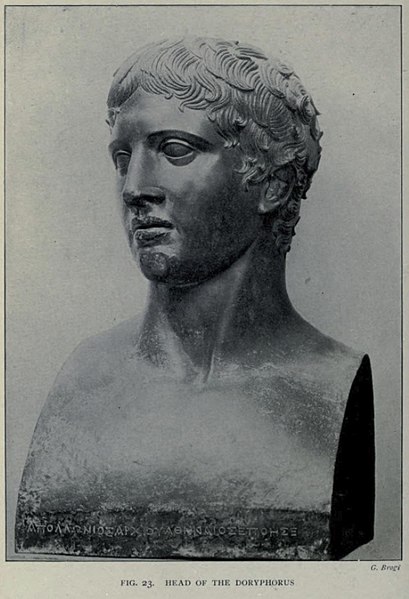The Diadumenos ("diadem-bearer"), together with the Doryphoros, are two of the most famous figural types of the sculptor Polyclitus, forming a basic pattern of Ancient Greek sculpture that all present strictly idealized representations of young male athletes in a convincingly naturalistic manner.
The Athens example, with the quiver in view. National Archaeological Museum of Athens. Height: 1.95 metres (6 feet 4 inches)
Reconstruction, in a patinated cast at the Pushkin Museum, Moscow
Detail
Head of the Diadumenos type
The Doryphoros of Polykleitos is one of the best known Greek sculptures of Classical antiquity, depicting a solidly built, muscular, standing warrior, originally bearing a spear balanced on his left shoulder. Rendered somewhat above life-size, the lost bronze original of the work would have been cast circa 440 BC, but it is today known only from later marble copies. The work nonetheless forms an important early example of both Classical Greek contrapposto and classical realism; as such, the iconic Doryphoros proved highly influential elsewhere in ancient art.
A well-preserved Roman period copy of the Doryphoros of Polykleitos from the collection of Naples National Archaeological Museum. Material: marble. Height: 2.12 metres (6 feet 11 inches).
Head of Doryphoros excavated at the Villa of the Papyri in Pompeii
Statue of Augustus of Prima Porta
A Doryphorus-type of the canon Polycleitus, ca. 1886–1889. Nicholas Catsimpoolas Collection, Boston Public Library








